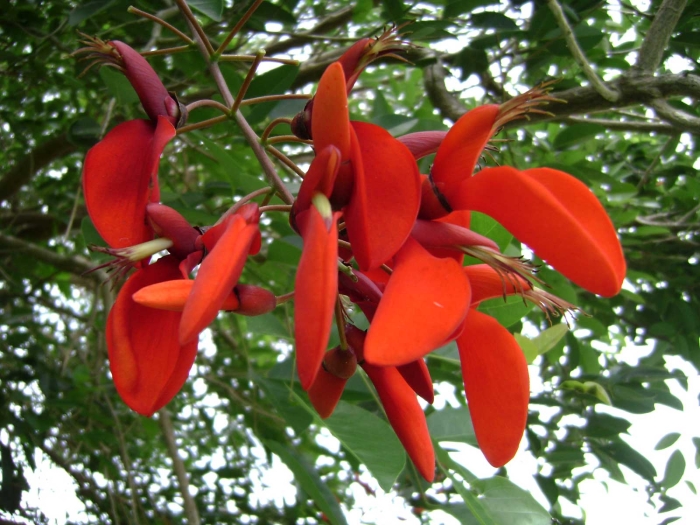Purple Coraltree
(Erythrina fusca)
Purple Coraltree (Erythrina fusca)
/
/

Tauʻolunga
CC BY-SA 3.0





































Estimated Native Range
Summary
The Purple Coraltree is valued for its ease of growth and attractive flowering, making it a popular choice for ornamental shade and hedge plantings. It is also used for erosion control due to its robust root system. In cultivation, it thrives in full sun and can tolerate a range of water conditions, from low to medium, and is adaptable to various soil types with different drainage speeds. Despite its ornamental value, gardeners should be cautious as the tree can become invasive in certain regions outside its native range. Additionally, its spiny bark and seeds, which contain toxic alkaloids, can pose a hazard to humans and animals if ingested.CC BY-SA 4.0
Plant Description
- Plant Type: Tree
- Height: 12-50 feet
- Width: 12-50 feet
- Growth Rate: Moderate
- Flower Color: Orange, Red
- Flowering Season: Fall, Winter, Spring
- Leaf Retention: Deciduous
Growth Requirements
- Sun: Full Sun
- Water: Medium
- Drainage: Slow, Medium, Fast
Common Uses
Bee Garden, Bird Garden, Butterfly Garden, Drought Tolerant, Edible*Disclaimer: Easyscape's listed plant edibility is for informational use. Always verify the safety and proper identification of any plant before consumption., Hummingbird Garden
Natural Habitat
Mangrove forests, coastal swamps, and riverbanks in tropical and subtropical regions worldwide
Other Names
Common Names: Coral Bean, Gallito, Bois Immortelle, Bucayo, Swamp Immortelle, Swamp Imortelle, Coral-Bean, Purple Coraltree, Swamp Immortelle, Cape Kaffirboom
Scientific Names: , Erythrina fusca, Erythrina glauca, Erythrina ovalifolia, Erythrina patens, Corallodendron fuscum, Corallodendron glaucum, Corallodendron ovalifolium, Corallodendron patens, Duchassaingia glauca
GBIF Accepted Name: Erythrina fusca Lour.